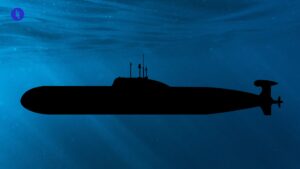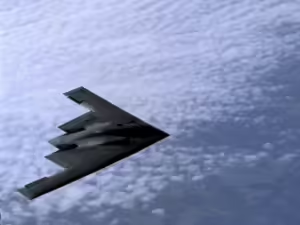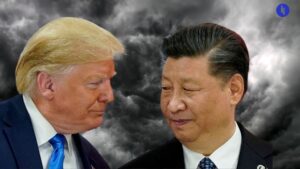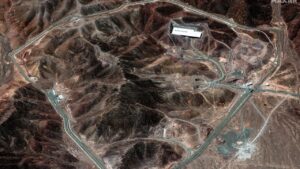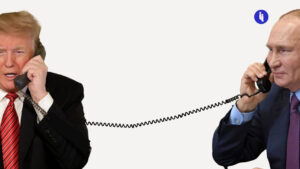French President Macron unveiled the newly restored Notre Dame Cathedral over the weekend, but many eyes were on two guests sitting in the pews — Donald Trump and Ukraine’s Volodymyr Zelensky.
There were photos and handshakes, but the two offered little insight into their 40-minute chat before the service, so let’s look at the key question: what do they want?
Sure, everyone says they want peace. But what does everyone really want?
Stay on top of your world from inside your inbox.
Subscribe for free today and receive way much more insights.
Trusted by 134,000+ subscribers
No spam. No noise. Unsubscribe any time.
- Zelensky 🇺🇦
President Zelensky turned heads on Monday when he said there’s “no doubt, a diplomatic resolution would save more lives. We do seek it.” There’s been some breathlessness that maybe this signals an easing in his position, but it’s equally possible this was just a shift in rhetoric to avoid being painted as the problem ahead of Trump 2.0. Still, one reason his choice of words was notable was the fact he’s not alone: just hours ago, his neighbour, backer, and the EU’s next rotating president (Poland) hinted negotiations could start this winter.
So, what else do we know?
- Zelensky has made clear he wants a permanent solution to the conflict rather than a ceasefire that simply allows Moscow to regroup then attack again.
- For Zelensky, that means some form of military deterrence, whether joining NATO, deploying strategic arms, and/or hosting Western troops. There are varying degrees of viability at play here, but his core point is that, for Ukraine, this invasion is itself evidence of Russia breaching past commitments (1975, 1994, 1997, etc) that weren’t backed by hard power.
- As for territory, Zelensky has shifted a little here too, acknowledging last week that “our army lacks the strength to do that [retake all lost land ], that is true. We do have to find diplomatic solutions.“
Of course, he’s also under huge pressure, with Trump 2.0 flagging possible cuts to US support, while Russia makes grinding gains, which all takes us to…
- Putin 🇷🇺
President Putin’s stated goals have long been Ukraine’s “de-nazification”, de-militarisation, and neutrality. And he’s gone further, even describing Ukraine as “not a real country”.
But what does this really mean? At face value, it means replacing Ukraine’s elected (Jewish) president, hamstringing its military, and banning it from NATO. Zooming out, that means a weak and unstable Ukraine beholden to Moscow. And zooming out again, that means a world based not on sovereign states and international law, but on self-defined ‘spheres of influence’ — major powers running their own ‘hoods.
Of course, there’s a spectrum of possible options along each aim, plus his persistent calls for sanctions relief and keeping his spoils (including land he hasn’t even seized yet). So how do we know where Putin’s real lines are? It’s a guessing game in autocracies, but his spy chief just claimed (🇷🇺) Putin is close to winning, while his own office says his goals “will be exactly what Putin considers necessary to declare his victory”.
You could interpret this circular reasoning as standard bluster. Or you could interpret it as Putin’s proxies shifting his goalposts closer given the pressures he’s facing: humiliation in Syria, staggering losses in Ukraine, and elites starting to say the quiet bits out loud back home — his record 21% interest rates to hose down inflation have triggered public bankruptcy warnings across retail, industry, and even arms manufacturers. But this also makes it harder for Putin to stop: can he justify it all for only the 20% of Ukraine he’s got?
- Trump 🇺🇸
He’s not president yet, but Trump’s moves will already have the biggest impact on how other players read the room: not just Putin and Zelensky, but their respective backers.
So where is Trump at? There are mixed signals: several of his key national security picks have been relatively establishment figures who’ve publicly backed Ukraine’s self-defence. And whatever is happening behind closed doors — plus Trump’s tweet highlighting Russian weakness over the weekend — there’s relief coming out of European capitals that maybe he doesn’t want to risk his own Saigon or Kabul moment by abandoning Ukraine.
But he’s still saying (as recently as Monday) that he’s open to reducing aid to Ukraine and even pulling the US out of NATO. Maybe that’s another classic ‘threaten then negotiate’ Trump move, like he just pulled against Mexico and Canada? Maybe.
Meanwhile, the outgoing Biden administration continues to rush its remaining security assistance to Kyiv, and just transferred $20B generated from seized Russian assets.
INTRIGUE’S TAKE
Some of the most interesting thinkers on Russia come from places it’s previously occupied, like Estonia. And one example is its former PM (Kaja Kallas), who just became the EU’s top diplomat. She often quotes a Soviet foreign minister (Gromyko) when describing the Russian approach to negotiation:
- Demand something that’s not yours (Ukraine, in this case)
- Make threats (including nuclear), then
- Don’t give an inch in negotiations, because in the West there’ll always be someone willing to offer you something, and you’ll end up with a third or even half the thing you didn’t have before (see step 1 above).
So how to respond? Negotiation guru Herb Cohen actually wrote a whole chapter about this in his book, and his conclusion is as simple as it is difficult: never play that game. To be clear, his point wasn’t to never negotiate. Rather, it’s to be clear-eyed about the game your adversary is trying to play, then go ahead and play your own.
Also worth noting:
- Trump’s rapport with Zelensky looks to have improved: he seemingly wore Ukraine’s blue and yellow to their Notre Dame meeting, then went for a second chat after attendees gave Zelensky a standing ovation.
- Ditto, Zelensky tweeted yesterday that he appreciates Trump’s “decisiveness”, describing it as “exactly what can help”.

